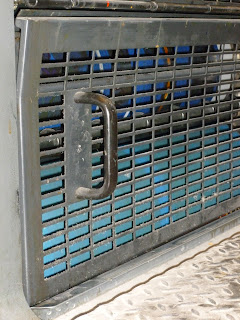UPPER/LOWER CASE
SAN / SERIF
POINT SIZE
WEIGHT (LIGHT, BOLD)
KERNING - the space between the letters e.g. business cards
- lower case is much harder to work with than upper case
- visually evenly spaced between each letters, it is the area between them, create a consistent white space between the letters
- It is actually harder than that
- with circular letterforms that are open (C, G) you have to include some of the enclosed space and the same with S and T
- It is not the distance between the letters (top or bottom ) but it is the WHITE space between the letters
- Most words need curning by you - don't just let the computer do it for you
- You will have to do it for; logo, branding and 50% of your work will need it.
- Dont kern anything if it is longer than one work.
- Kerning is about perfection - logos / brand names have to be perfect
- Never negatively curve a word - what you ate looking for to start with is the largest space between the letters, which is the biggest space
- TASK - first name in sans-serif typeface and last name in a serif typeface in upper case (get someone to look at it)
- When typography was done by hand and metal blocks, none of the letters could overlap, but now the computer overlaps the edges of the letters
- You just want to add enough to the white spaces for it to be balanced
- There should always be 2 letter combinations in a word that you haven't kerned
HIERARCHY
- you need to know what order to put the information in the correct order to be written and read - seem more interesting.
- The dangers or graphic designers - there is a lot of crap design in terms of hierarchy - developing the understanding is an on going process
EXERCISE
- how to make some on read from bottom
- Start letting your brain looking at what you can see rather than you eyes catch something and your brain reading it
- trick of hierarchy - stare at it and look at it for a blink of an eye - fast as you can as you can and remember what you read\
- It is to do with how far it is away from the page
- whatever happens you read 2 first
- The thing that you creates what you read is the SPACE around it - the thing that controlls everything, you need to learn how to operate this.
The trick is to look - and see what you see instead of what you think you see
If you are looking at it your read 1,2,3,4 but you dont look at it properly, the first thing you look at is 4, then go go to eye goes to 1, then back to 4 then to 2, then to 4 then to 3....
There perfect way to draw attention is to put it at the top - despite us being lazy, you will try and read something. If you put it upside down you wont read it.
Layout for poster design - an understanding of position and point size is CRUCIAL for how to get people to read it and which parts. Developing skills in typography is developing skills
You are more likely to read something if it is in lower case because we read by shape, so we jump from one to Three because it is lower case
Educate your brain and start reading the type.
You have changed the shape of the 'one' and so you jump automatically to 'two' but then you start moving it away and at a certain
EXERCISE - short proverb or sentance of a song (6 or 7 words) play around with a graphics like this, see how you can get him to read it. Have a break after 10 minutes and get someone to look at them for you
size, weight, same font, spacing
FOR HEADINGS
Quite often you will need to break it into two lines, so somethings you can do are;
- The rule of breaking a sentence where the natural pause is - say it out loud and it will become obvious.
- The same same thing for 3 lines
- every way you break a line you change the meaning of the heading.





















































